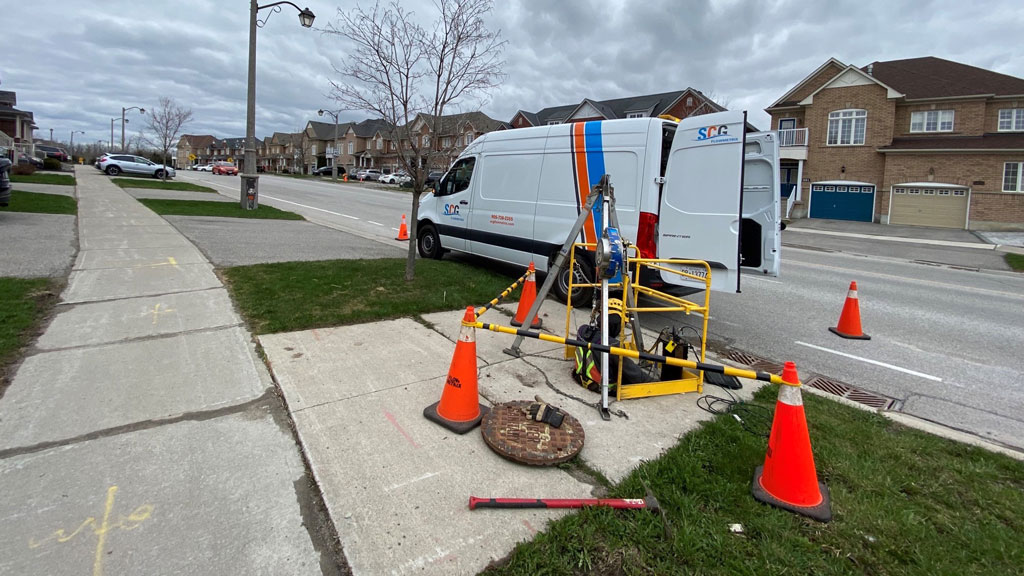The Region of Peel in Ontario is taking steps to enhance its asset management planning, advance on its climate change goals and boost its wastewater infrastructure monitoring capabilities in one fell swoop this winter with the adoption of infinitii ai FlowWorks Facepro software.
Concord, Ont.-based SCG Flowmetrix announced in January it was awarded a major sewer flow and rainfall monitoring contract. The firm is now installing 350 sensors throughout Peel Region’s sewer network and more than 30 rain gauges.
The software, fresh out of the lab and powered by AI, will be employed by SCG Flowmetrix to monitor and collect data for hydraulic modelling, perform capacity assessments, inflow and infiltration remediation, and undertake flood forecasting and regulatory reporting requirements.
“It’s servicing the municipality and it’s helping them make good decisions,” said SCG Flowmetrix vice-president Sam Mills.
“Informed decisions come from more data and more information. Our play with our bid to the region was really based on providing not only top-quality data, but more data than others and using more innovative software that provides deeper layers of data.”
Real-time data will provide actionable information during extreme weather events and will enable Peel Region to proactively plan sewer network maintenance, Mills said.
Beyond those day-to-day tasks, Mills explained, the FlowWorks software will not only enable users to engage in predictive analysis, with numerous applications within the water and wastewater system, but will also lead to integration with other systems.
“All the software platforms are trying to do the same thing,” said Mills. “They’re all trying to get to this place where the predictive nature of it improves their accuracy and gives them a more sturdy platform to then take data from all these other sources.
“So cities are really looking at integrating sewer flow data with energy data, with capacity and population data, GIS software data — it’s really about bringing that horsepower together.”
Public owners using AI-enabled software thus become equipped to make better future capacity decisions. And historical data can also be integrated, said Mills. The predictive ability grows and grows, he said, and more useful algorithms start to build.
“They can figure out whether or not they can approve a 500-persons dwelling, to add an existing line to their trunk sewer and say, ‘yes, this can handle the capacity.’
“Otherwise, ‘sorry, Mr. Developer, we’re not going to approve this because our infrastructure isn’t there.’”
Decision-makers can create better systems and better infrastructure, Mills said, for the next half-century, and that includes new demands such as climate change adaptability.
“I’m going to want this sewer flow data, but I also want to put it up against my energy use data, and then I’m going to put that up against the gas usage data, and I’m going to start to draw better conclusions for the residents of my municipality to make sure that I’m making the best decision for them.
“I mean, at the end of the day, that’s my goal.”
The installations require minimal interruption, Mills said. Crews with confined space and rescue training set up a traffic stop, don a harness and undertake a confined space entry after checking for gas and other hazards. Once descended to the bottom of the sewer, they look for an appropriate space to install a monitor.
The data collection can ensue immediately.
Bell said his team has been working with FlowWorks since about 2016 so there was ample familiarity with its base-level software. Then FlowWorks came up with an update.
“When it came to this new version, the Facepro version, the machine learning, all that fun stuff, that just recently came out, we really recognized the horsepower they were putting behind that.”
For public owners, Mills said, improved asset management is a major benefit, as is progress on climate change goals.
“It starts to give us better data to allow for risk management. So when we look at how that allows us to manage the risk of flooding, we can start to look at proactive measures that we can take to minimize flood damage, which lowers our total cost to the environment.”
Follow the author on Twitter @DonWall_DCN



Recent Comments